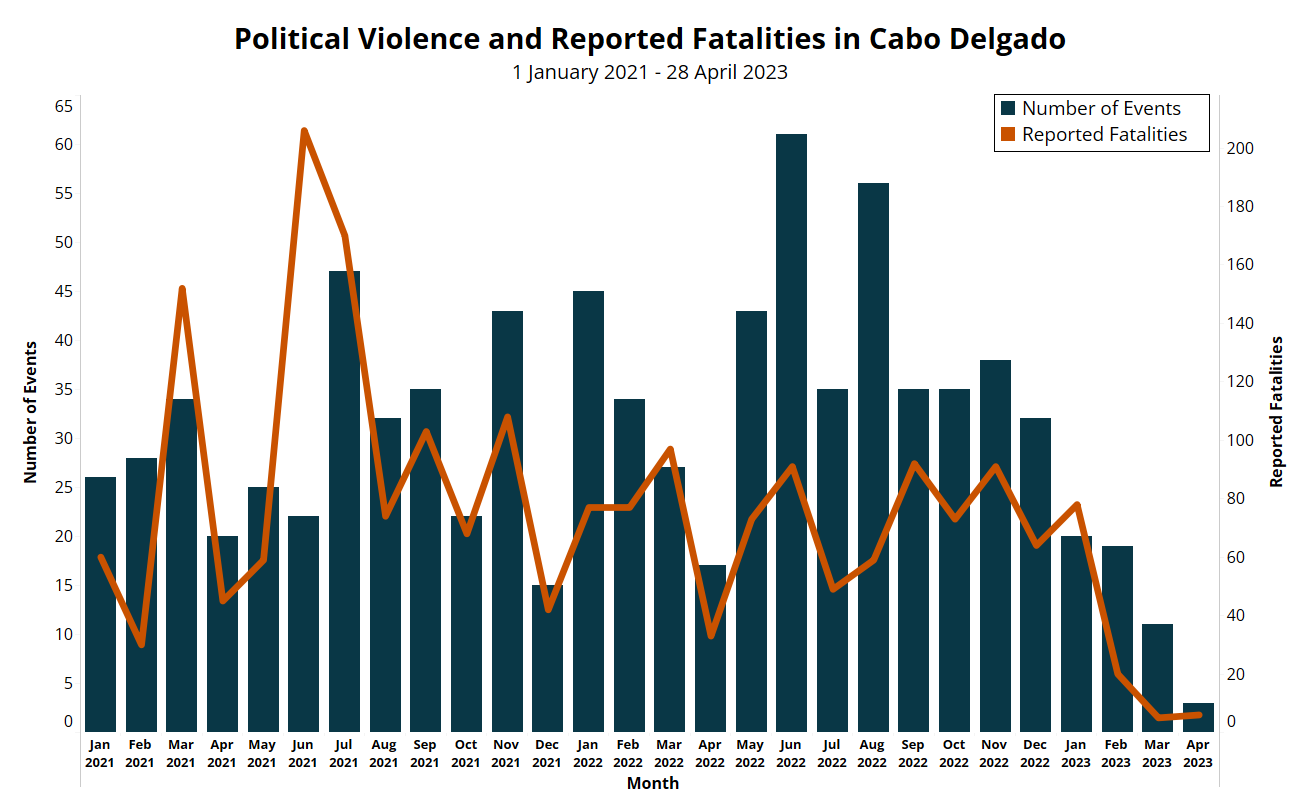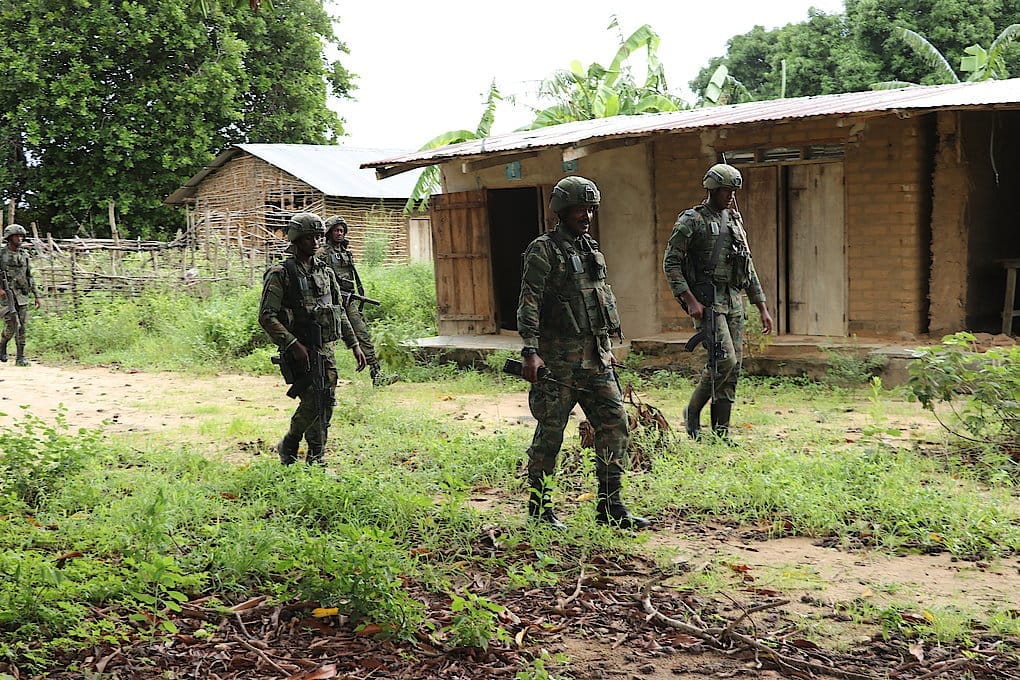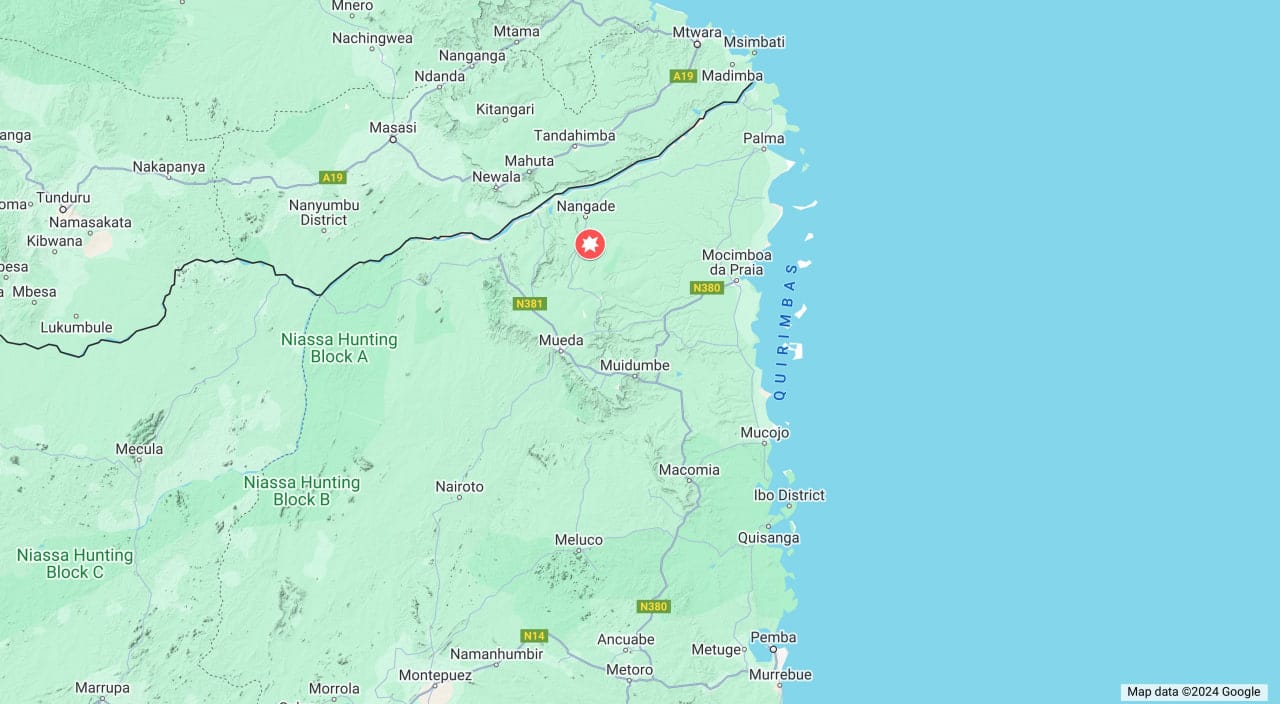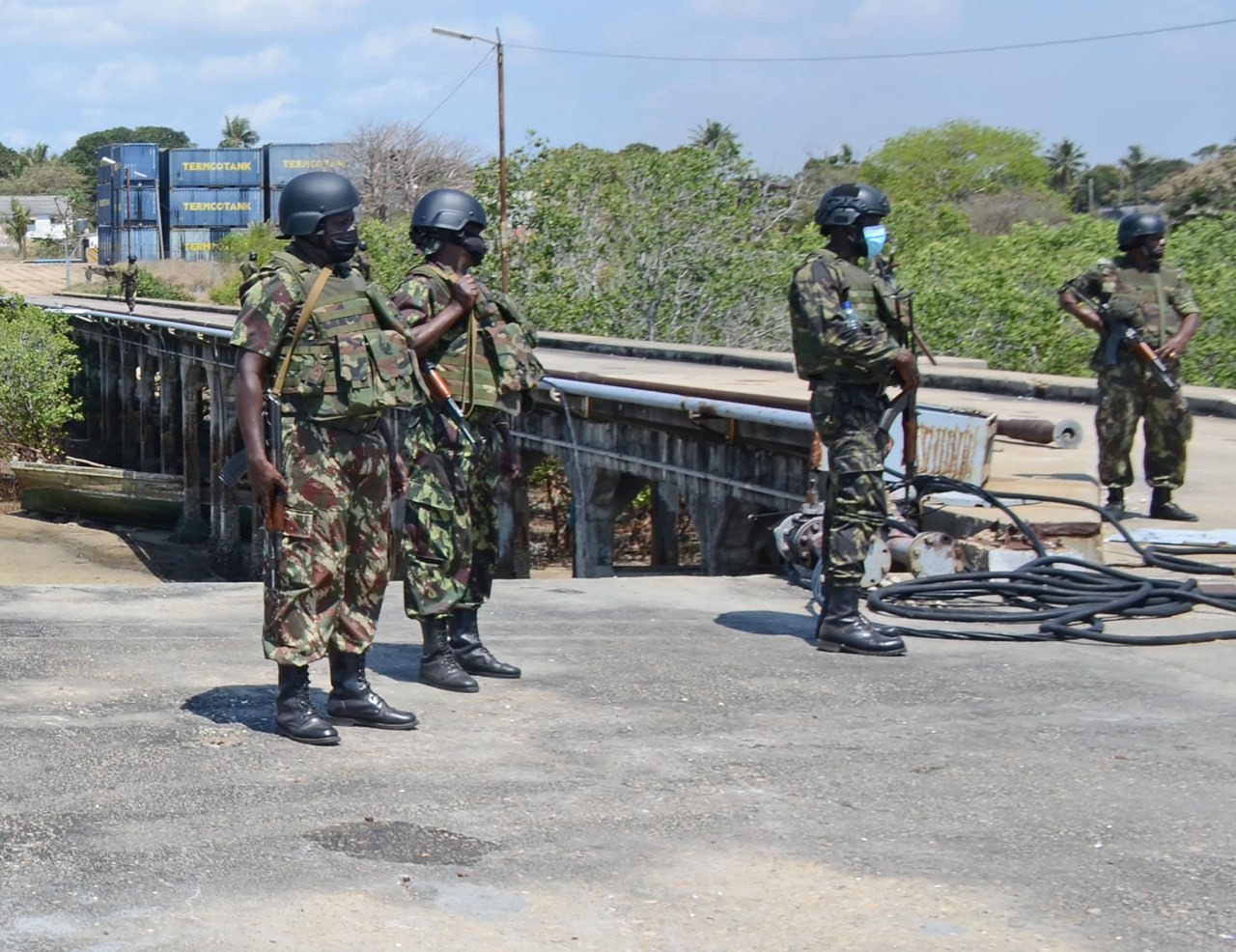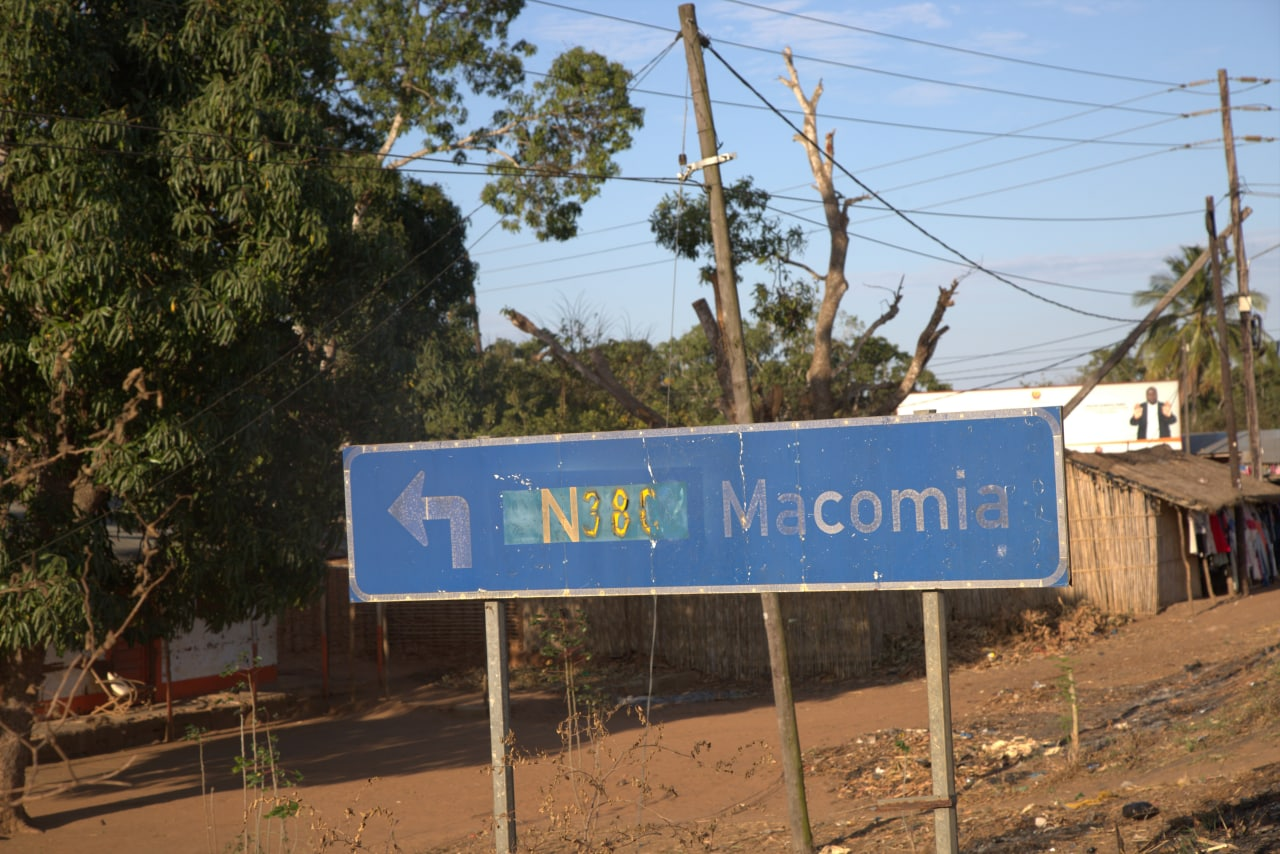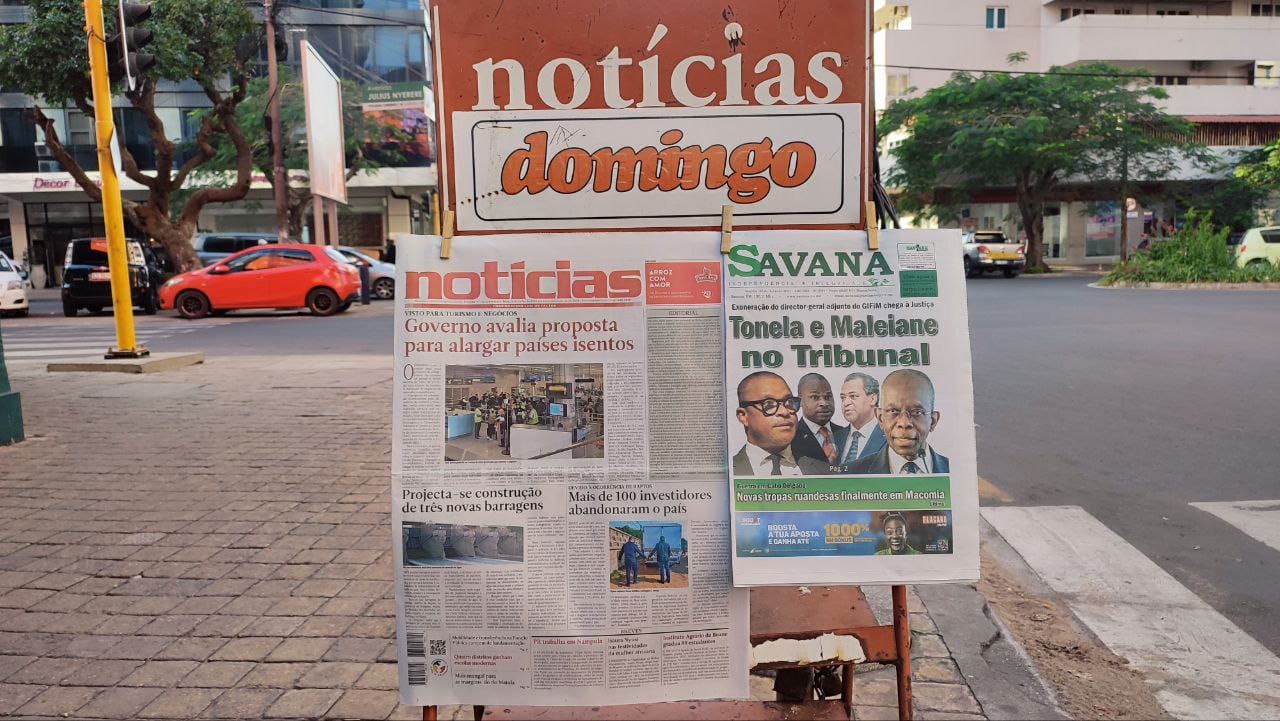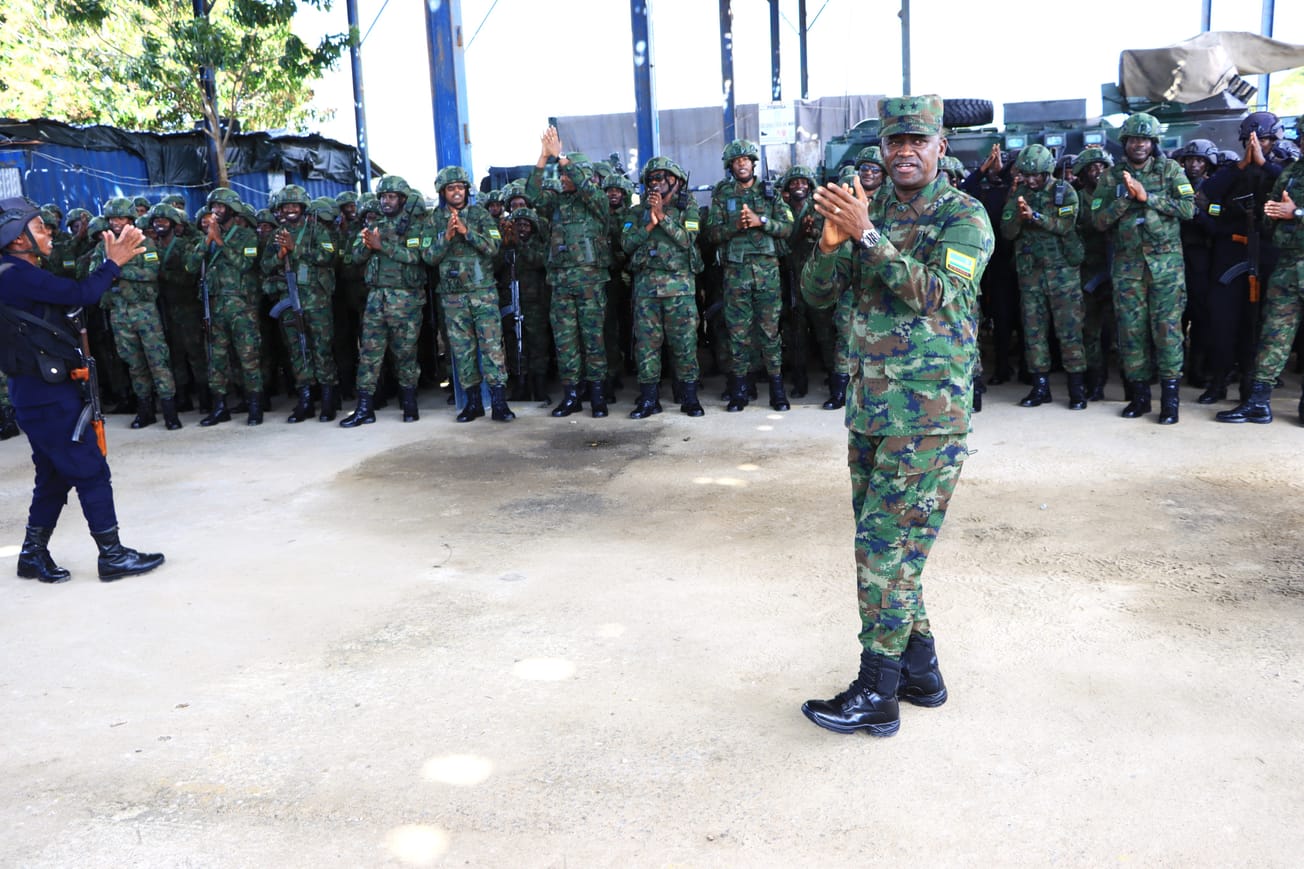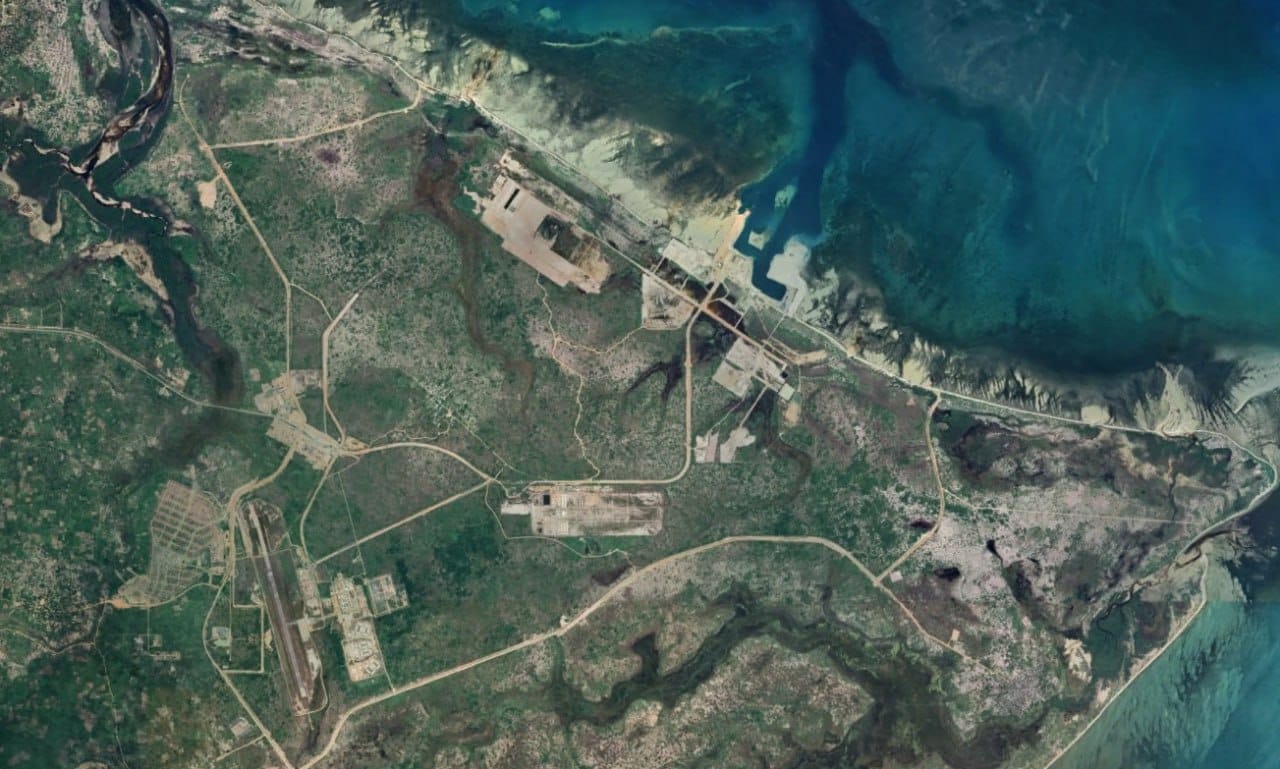For Cabo Delgado, the first four months of 2023 were marked by a decline in the number of political violence events, and fatalities recorded by ACLED over the period. They are also starkly different from the corresponding period last year in frequency, location, and targeting by insurgents, highlighting that military intervention has been able to contain and push back the insurgency. Yet, the insurgents continued tactical acumen, and their use of IEDs indicates that a very real threat remains. The increasing centrality of Local Forces to the response highlights the importance of their reform and integration into the military.
This piece is from the Cabo Ligado Monthly: April 2023
.png?format=1500w)
January to April 2023 saw 53 political violence events recorded, and 109 fatalities; 75% of those events, and 90% of the fatalities, took place in January and February. As well as declining over the period, events were more geographically concentrated in Muidumbe district, and territory in neighbouring districts of Mocímboa da Praia, Macomia, and Meluco. Indeed in April, just three political violence events were recorded in the province, all of them in Muidumbe. The banks of the Messalo river, which runs through this territory, have been the insurgents’ sanctuary of choice for some years. The only exceptions to this were in February, when insurgents were involved in four clashes in Montepuez district, and when one suspected insurgent was killed in Ancuabe district in the south.
As well as a decline over the past four months, there has been a striking decrease in activity compared to the same period last year, which saw 122 recorded political violence events, and 283 reported fatalities over the same period. Insurgent activity was more widespread too at that time, spread across nine districts, including Ibo and Quissanga districts on the coast, and Nangade district to the north. Up to the end of April this year, just two political violence events involving insurgents were recorded in Nangade. For this period in 2022, approximately as many political violence events involving insurgents (51) were recorded in Nangade as were recorded for the whole province for the corresponding period in 2023.
By pursuing two very different approaches in Muidumbe, and on the coast, the insurgents demonstrated some tactical acumen. The puzzle is to understand why there has been no significant military response to their presence. Rwandan forces have taken some action in Mocímboa da Praia, but over the past four months, insurgents have been able to move relatively freely in coastal Macomia district. They have also taken a markedly different approach to returnees, seeking to do business with them, rather than drive them away as in Miangelewa. This approach presents the authorities with a dilemma. Keen to encourage return, the state does not wish to see disruption that could affect the municipal elections in Mocímboa da Praia, or, perhaps more importantly TotalEnergies’ decision-making on resuming its liquefied natural gas project. This may explain the lack of intervention by both the Mozambique Defense Armed Forces (FADM), and the South African contingent of SAMIM based in Macomia district headquarters.
As well as frequency and location, targeting by the insurgents has also seen a significant shift. The first four months of 2023 saw insurgents target civilians 17 times, 35% of all political violence events in which insurgents were involved. These accounted for 14 of the 109 total reported fatalities. For the same period last year, insurgents targeted civilians 68 times, equivalent to nearly 60% of events in which insurgents were involved. These events accounted for 124 of the 283 total reported fatalities for that period.
While clashes have been fewer and limited in geographic scope, the group remains tactically astute, and is developing some technical capacity. An example of the first is the attack on Miangelewa on 15 April. This targeted a community of approximately 500 returnees who had arrived in the previous two weeks, and whose return had been underwritten by Frelimo. Immediately, the returnees fled. In Meluco district, attacks on the N380 road successfully disrupted commercial and other traffic. Displacement of civilians and economic disruption through attacks on main transport routes have been cited by Islamic State (IS) as central to their approach.
Insurgents’ increasing technical capacity is seen in the use in recent months of more sophisticated IEDs than they have used before. The Botswana Defence Force (BDF) contingent of the SAMIM was hit twice by such devices in the Mandava area of Muidumbe district on 9 March and 24 March. According to security sources, these devices are considerably more sophisticated than have been used in the past, suggesting outside technical assistance.
While insurgents’ offensives so far this year have been concentrated in and around Muidumbe district, they presented quite differently in coastal areas of the province, particularly Macomia and Mocímboa da Praia districts. In March and April alone, ACLED recorded non-violent incidents during which insurgents entered communities, presented themselves peacefully, and in most cases, bought supplies. When sources indicated their numbers, they were never less than 30.
Unconfirmed reports indicate that the group is currently cash-rich. On two occasions, sources told of insurgents offering money to the elderly. This was allegedly in January in Calugo in Mocímboa da Praia district, and in Pangane in Macomia in March. Movements in this area are likely centered on a new base established in the abandoned town of Namurussia, inland from Calugo village in coastal Macomia.
In February, the group distributed money at the village of Nicocue in Montepuez district, after destroying a commuter bus. One source said this was to attract recruits. Larger sums may be used to purchase supplies, and may be locally generated. In April, three were arrested on a supposed supplies trip to Mocímboa da Praia, using funds generated through a small business in Mueda.
In terms of other armed actors in the conflict, the most significant development was the Council of Ministers passing a decree-law in April for the regulation of the local militias, and their incorporation into the FADM. Their importance to the security response is borne out by the numbers. Over the past four months, ACLED data show that they directly clashed with insurgents 11 times, just one time less than the Defense and Security Forces (FDS), three more than SAMIM and Rwandan forces combined. In the same period last year, they directly clashed with insurgents just 16 times, while overall events were much higher.
Regularization of Local Forces has been a policy priority since at least April 2022. Their prominence in clashes in the past four months indicates just how important it will be to get that right, if state and intervention forces are to continue to contain the insurgency. In footage taken 11 days before the Miangelewa attack, Local Forces seen accompanying returnees were a mixture of uniformed Local Forces, and the less regulated Naparama militia in their distinctive red bandanas. Ensuring the incorporation of this popular militia into Local Forces and, ultimately, the FADM will be critical to maintaining progress.

